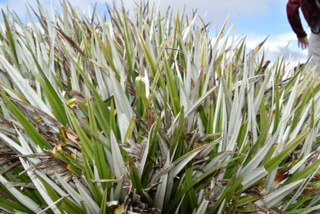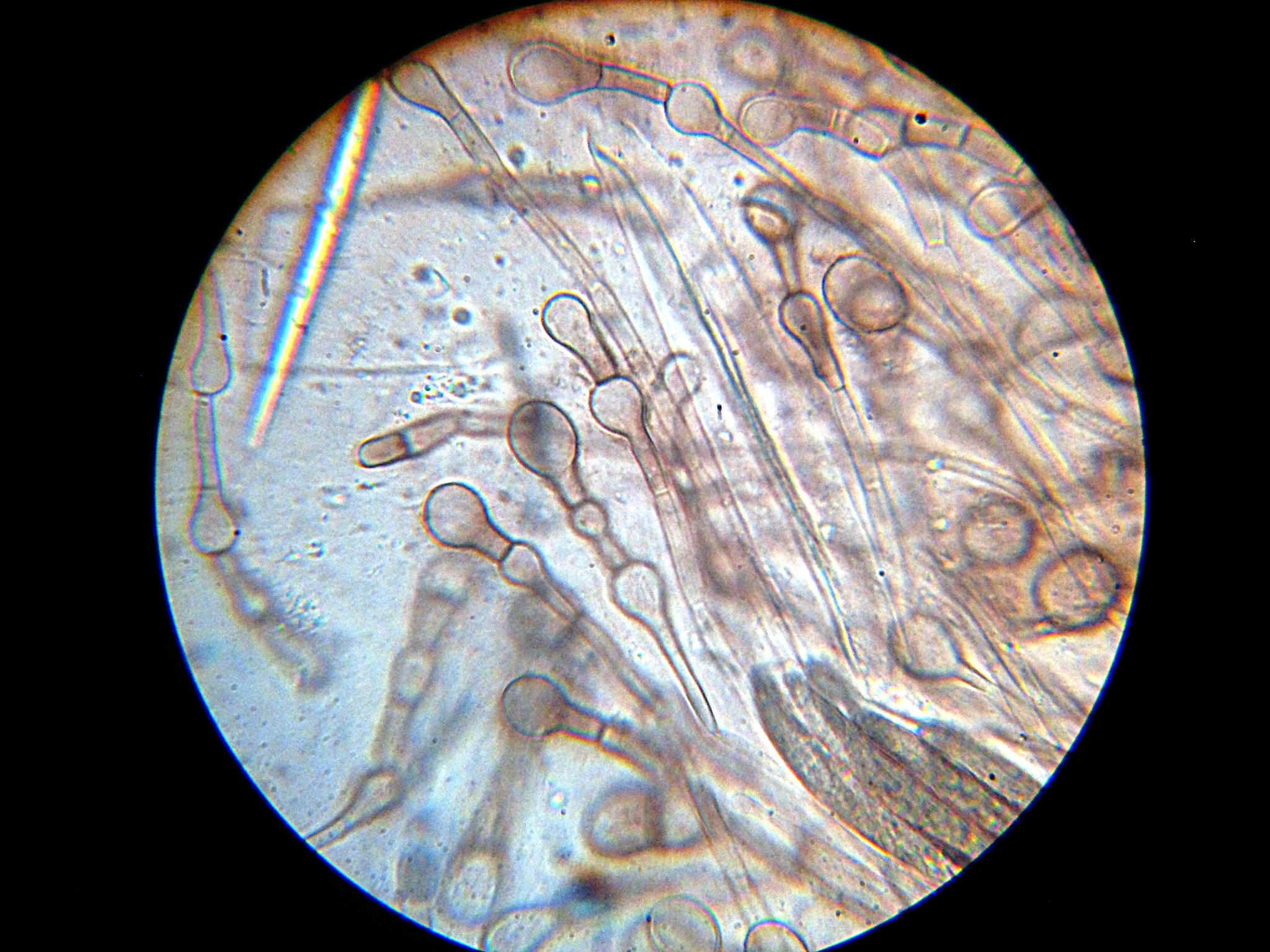|
Pleurophascum Grandiglobum
''Pleurophascum grandiglobum'' is a moss endemic to Tasmania, Australia, and was first noted by Sextus Otto Lindberg, S. O. Lindberg in 1875 for its peculiar form of cleistocarpous Capsule (fruit), capsule, erect growth form, lateral perichaetia, and ecostate leaves. Its exceedingly large, inoperculate, and often brightly coloured capsules captured the heart of the 19th-century Scandinavian Bryology, bryologist, who considered the moss to be "of no less interest to the Museologist than is ''Rafflesia'' or ''Welwitschia'' to the Phanerogamist". The species currently belongs to a Monotypic taxon, monogeneric family ''Pleurophascaceae'' that is found only in Temperate climate, temperate Australasia and includes three different species. ''Pleurophascum ovalifolium'', heretofore known as ''P. grandiglobum'' var. ''decurrens'', is the New Zealand taxon while the last remaining member of the genus, ''Pleurophascum occidentale,'' occurs only in Western Australia. The relationship betwee ... [...More Info...] [...Related Items...] OR: [Wikipedia] [Google] [Baidu] |
Cryptogam
A cryptogam (scientific name Cryptogamae) is a plant (in the wide sense of the word) or a plant-like organism that reproduces by spores, without flowers or seeds. The name ''Cryptogamae'' () means "hidden reproduction", referring to the fact that no seed is produced, thus cryptogams represent the non-seed bearing plants. Other names, such as "thallophytes", "lower plants", and "spore plants" are also occasionally used. As a group, Cryptogamae are the opposite of the Phanerogamae () or Spermatophyta (), the seed plants. The best-known groups of cryptogams are algae, lichens, mosses, and ferns, but it also includes non-photosynthetic organisms traditionally classified as plants, such as fungi, slime molds, and bacteria. The classification is now deprecated in Linnaean taxonomy. At one time, the cryptogams were formally recognised as a group within the plant kingdom. In his system for classification of all known plants and animals, Carl Linnaeus (1707–1778) divided the plant ... [...More Info...] [...Related Items...] OR: [Wikipedia] [Google] [Baidu] |
Astelia Alpina
''Astelia alpina'' called pineapple grass, silver astelia, or perching lily is a commonly found species in alpine and subalpine areas of Tasmania and the Australian Alps.Pickering, C.M., Jordan, M., and Hill, W. (2004) "Sexual dimorphism and sex ratios of two Australian dioecious species of alpine pineapple grass, ''Astelia alpina'' var. ''novae-hollandiae'' and ''Astelia psychrocharis'' (Asteliaceae) Nordic Journal of Botany, 23(2): 225-236 It is a perennial herb that typically dominates its environment by growing in dense clusters, called mats, in alpine bogs.Australian Native Plants Society (2009)Guide to Australian Plants; Astelia alpina Retrieved 2016-03-16 There are two subspecies: ''Astelia alpina'' var. ''novae hollandiae'' from New South Wales and Victoria and ''Astelia alpina'' var. ''alpina'' endemic to Tasmania.Maciunas, E., Conran, J.G., Bannister, J.M., Paull, R., and Lee, D.E. (2011) "Miocene Astelia (Asparagales: Asteliaceae) macrofossils from southern New Zealand" ... [...More Info...] [...Related Items...] OR: [Wikipedia] [Google] [Baidu] |
Gleichenia Alpina
''Gleichenia alpina'', commonly known as alpine coral-fern, is a small fern species that occurs in Tasmania and New Zealand. It grows in alpine and subalpine areas with moist soils and is a part of the Gleichrniaceae family. The species was first formally described by botanist Robert Brown in 1810. Description ''Gleichenia alpina'' is a common native ground-fern that grows in boggy alpine and subalpine vegetation. It has the typical ''Gleichenia'' foliage, which is repeatedly dichotomously divided before ending in pinnate laminas. The distinctive feature is deep pouches densely covered with hairs on the underside of the pinnules. ''Gleichenia alpina'' is characterised by comparatively short frond axes and the dense orange-brown (becoming pale) scales that obscure the abaxial surface of the lamina. Its strongly pouched ultimate segments mean it can be confused only with ''G. dicarpa''. From that species, ''G. alpina'' can be distinguished by: the absence of stellate scales wi ... [...More Info...] [...Related Items...] OR: [Wikipedia] [Google] [Baidu] |
Campylopus Introflexus
''Campylopus introflexus'', also known as the heath star moss, is a species of moss. The first description of the species was made by Johannes Hedwig as ''Dicranum introflexum'' in 1801. Description Individual plants measure , with lanceolate leaves . The costa is wide and occupies about half the leaf width. The plants are found in dense mats and extensive carpets and are yellowish to olive green. They are acrocarpous and perennial. Multiple sporophytes are often present in one plant. The seta are between 7 and 12 millimeters in length, and are yellowish brown to brownish. The capsules are brown and 1.5 millimeters long. It produces spores of 12–14 µm in size. This species will sometimes reproduce asexually by means of stem tips that break off and are distributed by the wind. Even whole cushions can be relocated by wind, animals, and humans to colonize new isolated or remote locations. Once established, they can cover several hundred square meters within ten years. In ... [...More Info...] [...Related Items...] OR: [Wikipedia] [Google] [Baidu] |
Gymnoschoenus Sphaerocephalus
''Gymnoschoenus sphaerocephalus'', commonly known as buttongrass, is a species of tussock-forming sedge from southeastern Australia. It forms part of a unique habitat in Tasmania. It was originally described as ''Chaetospora sphaerocephala'' by Scottish botanist Robert Brown in his 1810 work ''Prodromus Florae Novae Hollandiae et Insulae Van Diemen'', before being given its current binomial name in 1858 by Joseph Dalton Hooker. ''G. sphaerocephalus'' is a perennial sedge species which forms a clump or tussock. The leaf blades reach in length, and in width. The round flowerheads arise out of the tussock, on culms which are up to high. They are around in diameter and made up of flattened spikelets long. Its root system is a mass of fleshy carbohydrate-rich rhizomes, which are edible. In New South Wales it is found from Gibraltar Range (and Myall Lakes on the coast) south to Robertson. In Victoria the plant is known from at least two locations, one to the east of Melbourne ... [...More Info...] [...Related Items...] OR: [Wikipedia] [Google] [Baidu] |
Birchs Inlet
The Birchs Inlet, also spelt Birch's Inlet or Birches Inlet, is a narrow cove or coastal inlet on the south-western side of Macquarie Harbour on the west coast of Tasmania, Australia. The inlet is located within the Southwest National Park, part of the Tasmanian Wilderness World Heritage Area. Features and location The inlet lies approximately south of the town of Strahan and serves as the mouth of the Birchs, Pocacker and Sorell Rivers, three of several draining south-western Tasmania. About in length, the mouth of the inlet lies near the head of Macquarie Harbour not far from the mouth of the Gordon River. It is only accessible by water transport. It has been at times an important access point for loggers working in the area for moving Huon Pine to Strahan. It lies at the northern end of the Melaleuca to Birchs Inlet Important Bird Area. It is one of only two (the other being at Melaleuca) study sites for orange-bellied parrot The orange-bellied parrot (''Neophema ... [...More Info...] [...Related Items...] OR: [Wikipedia] [Google] [Baidu] |
Paraphyses
Paraphyses are erect sterile filament-like support structures occurring among the reproductive apparatuses of fungi, ferns, bryophytes and some thallophytes. The singular form of the word is paraphysis. In certain fungi, they are part of the fertile spore-bearing layer. More specifically, paraphyses are sterile filamentous hyphal end cells composing part of the hymenium of Ascomycota and Basidiomycota interspersed among either the asci or basidia respectively, and not sufficiently differentiated to be called cystidia A cystidium (plural cystidia) is a relatively large cell found on the sporocarp of a basidiomycete (for example, on the surface of a mushroom gill), often between clusters of basidia. Since cystidia have highly varied and distinct shapes that ar ..., which are specialized, swollen, often protruding cells. The tips of paraphyses may contain the pigments which colour the hymenium. In ferns and mosses, they are filament-like structures that are found on sporangia ... [...More Info...] [...Related Items...] OR: [Wikipedia] [Google] [Baidu] |
Rhizoid
Rhizoids are protuberances that extend from the lower epidermal cells of bryophytes and algae. They are similar in structure and function to the root hairs of vascular land plants. Similar structures are formed by some fungi. Rhizoids may be unicellular or multicellular. Evolutionary development Plants originated in aquatic environments and gradually migrated to land during their long course of evolution. In water or near it, plants could absorb water from their surroundings, with no need for any special absorbing organ or tissue. Additionally, in the primitive states of plant development, tissue differentiation and division of labor was minimal, thus specialized water absorbing tissue was not required. The development of specialized tissues to absorb water efficiently and anchor themselves to the ground enabled the spread of plants to the land. Description Rhizoids absorb water mainly by capillary action, in which water moves up between threads of rhizoids and not through ea ... [...More Info...] [...Related Items...] OR: [Wikipedia] [Google] [Baidu] |
Ontogeny
Ontogeny (also ontogenesis) is the origination and development of an organism (both physical and psychological, e.g., moral development), usually from the time of fertilization of the egg to adult. The term can also be used to refer to the study of the entirety of an organism's lifespan. Ontogeny is the developmental history of an organism within its own lifetime, as distinct from phylogeny, which refers to the evolutionary history of a species. Another way to think of ontogeny is that it is the process of an organism going through all of the developmental stages over its lifetime. The developmental history includes all the developmental events that occur during the existence of an organism, beginning with the changes in the egg at the time of fertilization and events from the time of birth or hatching and afterward (i.e., growth, remolding of body shape, development of secondary sexual characteristics, etc.). While developmental (i.e., ontogenetic) processes can influence sub ... [...More Info...] [...Related Items...] OR: [Wikipedia] [Google] [Baidu] |
Pottiaceae
The Pottiaceae are a Family (biology), family of mosses. They form the most numerous moss family known, containing nearly 1500 species or more than 10% of the 10,000 to 15,000 moss species known. Genera The family has four subfamilies and 83 genera. * Subfamily Trichostomoideae **''Bryoceuthospora'' **''Calymperastrum'' **''Calyptopogon'' **''Chionoloma'' **''Eucladium'' **''Leptobarbula'' **''Neophoenix'' **''Pachyneuropsis'' **''Pleurochaete'' **''Pottiopsis'' **''Pseudosymblepharis'' **''Quaesticula'' **''Streptocalypta'' **''Tetracoscinodon'' **''Tetrapterum'' **''Tortella (plant), Tortella'' Lindb. **''Trachycarpidium'' **''Trichostomum'' **''Oxystegus'' **''Tuerckheimia (plant), Tuerckheima'' Broth. **''Uleobryum'' **''Weissia'' **''Weissiodicranum'' * Subfamily Barbuloideae **''Anoectangium'' **''Barbula'' **''Bellibarbula'' **''Bryoerythrophyllum'' **''Cinclidotus'' **''Dialytrichia'' **''Didymodon'' (e.g. ''Didymodon tomaculosus'') **''Erythrophyllopsis'' **''Ganguleea' ... [...More Info...] [...Related Items...] OR: [Wikipedia] [Google] [Baidu] |






